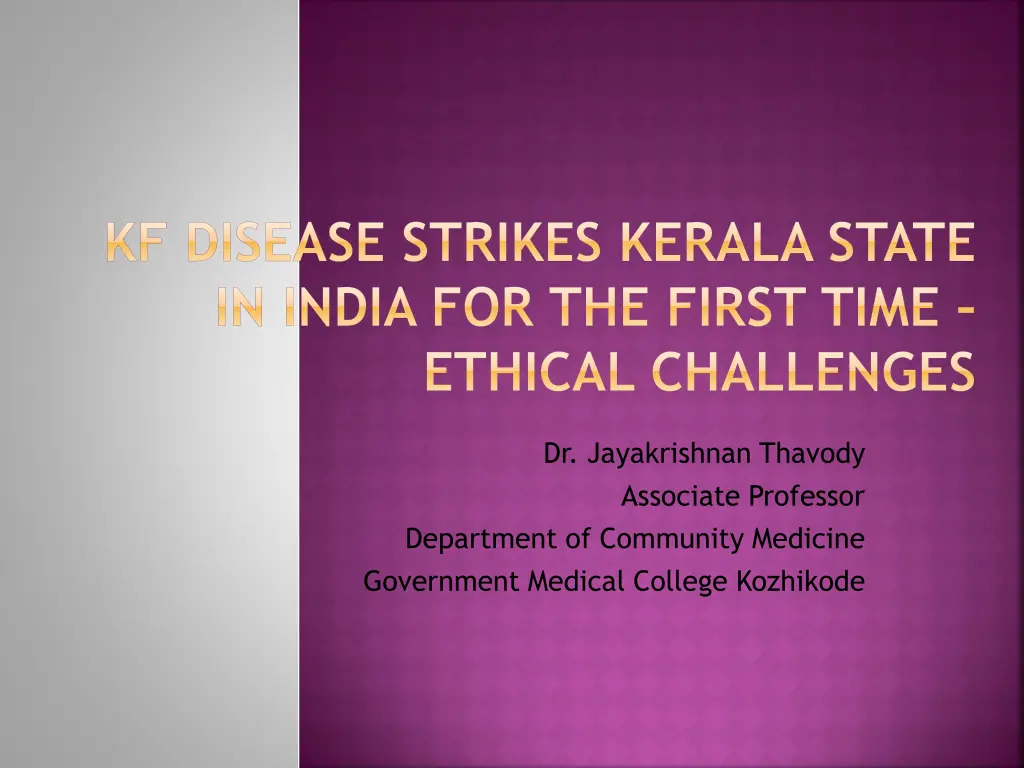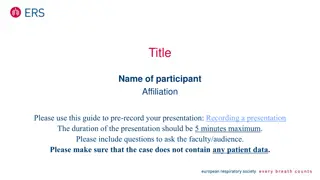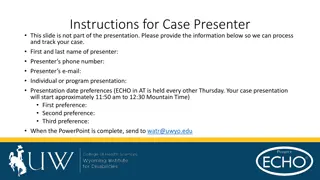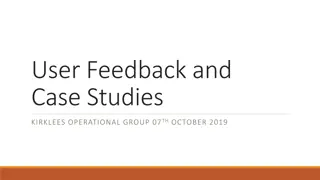
Ethical Challenges of KFD Outbreak in Kerala
A detailed overview of the Kyasanur Forest Disease (KFD) outbreak in Kerala, India for the first time, its symptoms, impact on the tribal population, and the ethical challenges associated with vaccine administration due to doubts about its effectiveness.
Download Presentation

Please find below an Image/Link to download the presentation.
The content on the website is provided AS IS for your information and personal use only. It may not be sold, licensed, or shared on other websites without obtaining consent from the author. If you encounter any issues during the download, it is possible that the publisher has removed the file from their server.
You are allowed to download the files provided on this website for personal or commercial use, subject to the condition that they are used lawfully. All files are the property of their respective owners.
The content on the website is provided AS IS for your information and personal use only. It may not be sold, licensed, or shared on other websites without obtaining consent from the author.
E N D
Presentation Transcript
KF DISEASE STRIKES KERALA STATE IN INDIA FOR THE FIRST TIME ETHICAL CHALLENGES Dr. Jayakrishnan Thavody Associate Professor Department of Community Medicine Government Medical College Kozhikode
KAYASANUR FOREST DISEASE (KFD) A tick-borne viral disease First reported in the Kyasanur forest of Karnataka state in India in 1957. Transmission from monkeys to humans through tick bite.
KFD Symptoms - high grade fever, joint pain, bleeding from nose and gums. Since 1957 KFD has claimed more than 500 lives in its state of origin Karnataka. But till 2015 KFD hadn t entered the neighboring states
TICK BITE SCAR ON A THE THIGH OF A FOREST GUARD
KERALA STATE Kerala state in India has the maximum number of health care institutions and the best health quality indicators in India highest Human Development Index (HDI) - 0.790 the highest literacy rate (93.91%) the highest life expectancy (77 years) and the highest sex ratio (1,084 women per 1000 men) This is often described as the Kerala Model of development
The tribal population within Kerala state is socioeconomically backward, with higher morbidity and mortality than general population.
KFD first appeared in Wayanad district of Kerala state in January 2015 as a focal outbreak following a monkey death. Wayanad - A hilly district with a high population of forest dwelling tribals. The KFD outbreak was restricted to tribals and forest department staff . Ten deaths.
ETHICAL CHALLENGES
ACCESS TO VACCINE AND EFFECTIVENESS No specific treatment for KFD and it is difficult to control the vector ticks Hence vaccination of population at risk forms a significant KFD prevention strategy. The vaccine is available Though found effective in previous studies, a recent study had raised doubts about its effectiveness. Hence the Public health experts were now divided over its use in the current outbreak. Is it ethical to administer the vaccine tribals in the wake of its doubtful efficacy to the vulnerable population the forest dwelling. Who should receive the limited supply of vaccine at first the tribals or the forest staff who works in the area?
TREATMENT AT PUBLIC OR PRIVATE HOSPITAL? The district where the outbreak happened does not have any government tertiary care hospital The nearest government tertiary care hospital is 3.5 hours away. There is a private medical school with good facilities in the area, but none of the patients would be able to afford the treatment costs. So the challenge now was, from where could the seriously ill patients should get treatment the distant public hospital which provides free care, or the nearby private hospital?
HOW THESE CHALLENGES WERE HANDLED
SHOULD THE VACCINE BE USED, AND HOW? Experts consensus to administer the available vaccine for now, and to recommend developing a more effective vaccine. The vaccine was provided to all forest officials in the first stage. They were monitored for side effects. As no side effects were reported, it was decided to vaccinate all tribals in the area. The guidelines by government and international agencies in this regard helped in arriving at the decision.
TREATMENT AT PUBLIC OR PRIVATE HOSPITAL? All the mild and moderate cases would continue to receive treatment from government facility. After discussions, the private hospital agreed to treat the all the seriously ill KFD patients at their centre free of cost.
KEY QUESTIONS UNANSWERED In the face of the disease outbreak, was there enough evidence to justify providing the vaccine to this population? Were the public health officials right to vaccinate the forest officials before the tribal people at risk? What data should be collected on the vaccine s effects as part of the vaccination program? Would relying on private health institutions prevent the development of better facilities in the public sector in the long term?












![Comprehensive Case Study on [Insert Case Title Here]](/thumb/159705/comprehensive-case-study-on-insert-case-title-here.jpg)









